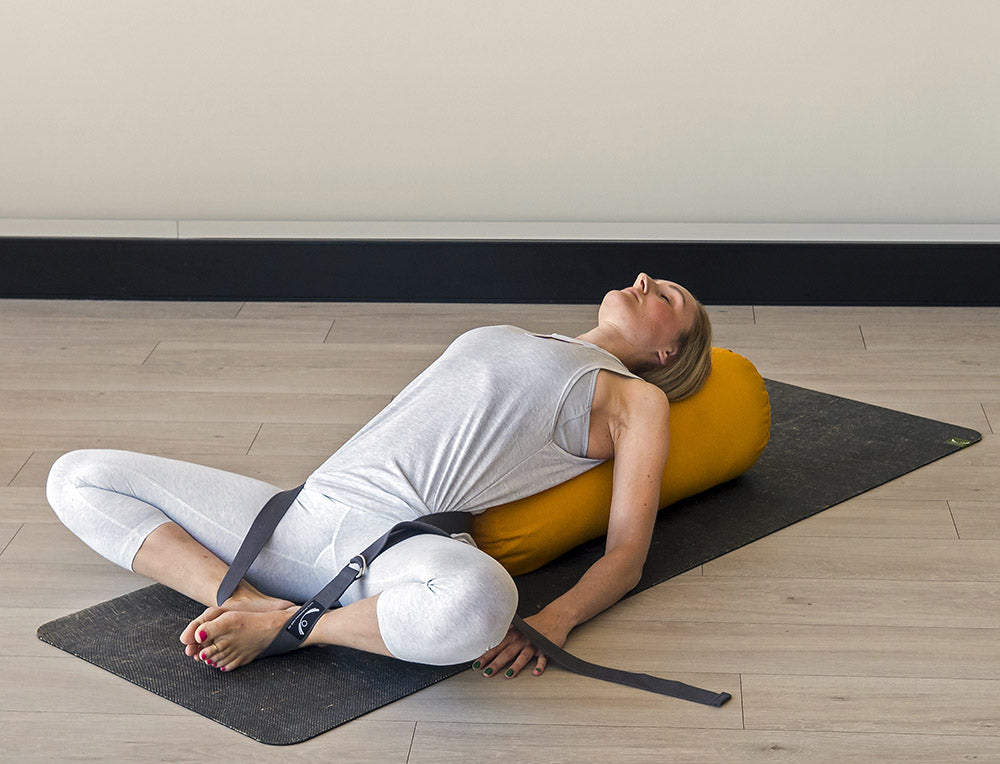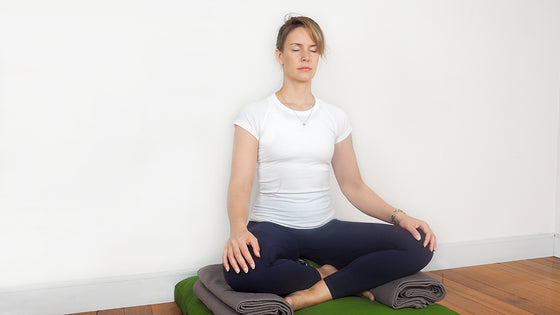- Ergonomic Products ▼
- Ergonomic Furniture ▼
- Yoga ▼
- Meditation ▼
- Pilates ▼
- Air Treatment ▼
- Blog
- Resources ▼
- About Us
- Wholesale
- Sign in
Reach further in your practice: Four ways to use a yoga strap
Whether you’re a seasoned yogi or a complete newbie, there are times when we can all use a little help to reach further and go deeper in certain yoga poses. Meet the humble yoga strap - a simple and versatile prop that offers valuable assistance in many yoga poses.
The yoga strap is useful for achieving safe and true alignment in your yoga postures (asanas), particularly if you have tight muscles or your flexibility is a work-in-progress.
Here are four of our favourite ways to use a yoga strap:
The ‘Up n Over’ shoulder-un-huncher:
If you spend long periods crumpled up over a keyboard or steering wheel you’ll love this simple sequence! Designed to loosen tight, cranky shoulders, this strap-assisted move also opens up the chest for full, easy breathing and encourages good posture.
How to get loose with the strap:
Stand on your mat in tadasana (mountain pose)
Have the hands beside the body
Ground the feet down, grow the crown
Relax the whole face, jawline, eyes
Hold the strap with both hands in front of the body, a little more than hip-width apart
As you breathe in, raise both arms up above the head, keeping the strap taut
As you breathe out, arc the strap overhead and behind you
This makes one round - complete 5-6 rounds, moving with the breath
Notes:
Pay attention to the position of your head; keep the crown in line with the tail to avoid the head jutting out
Widen the grip on the strap as feels suitable for you
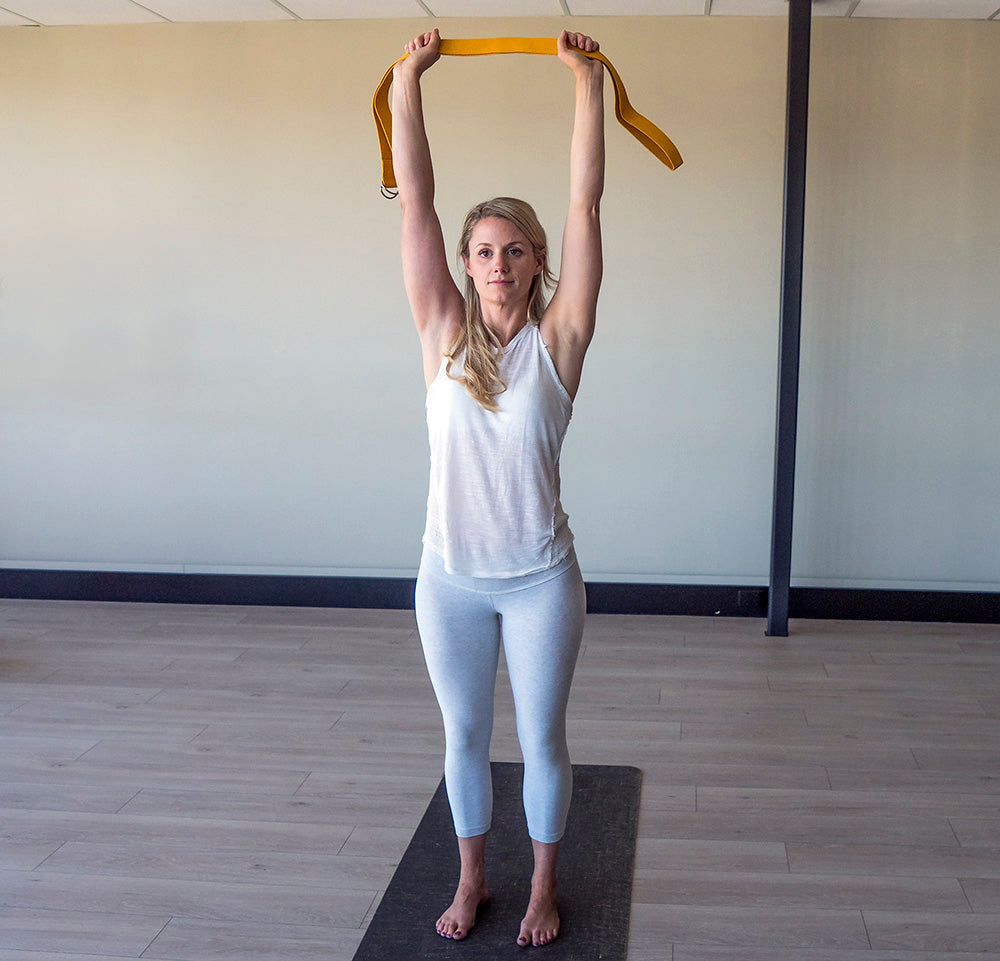
The ‘reality check’ forward bend:
Touch your toes? Easy, right? Sure, many of us can reach the toes with a fanfare of grunts, groans, strains and red-faced splutters, but yoga asks us to be honest and gentle with ourselves and to honour our limitations. And let’s face it, who hasn’t sneaked a peek over to the neighbouring mat and thought,’Well, if she can do it, so can I!’ and almost blown a gasket trying to achieve the same pose!
This is the ego getting in the way - hindering proper alignment in an attempt to achieve what we think the pose should look like - often to the detriment of comfort and safety. Time to take a strap, practice self-acceptance and ‘get real’ about our capabilities!
In Pachimottanasana (seated forward bend) the aim is not to touch the toes, rather to move forward from the hips, tilting the torso toward the legs, finding a comfortable, suitable place for the hands to rest, (whether that be the thighs or the toes!) A yoga strap is an ideal assistant to achieve the primary aim of this pose while keeping the spine happy and keeping the ego in check.
How to get real with the strap:
Ta-dah! - you’ve completed an honest, beautiful forward bend! No struggling or comparison required!

The luscious leg-lengthener
Perfect as an evening wind-down, this SuptaPadangustasana (Reclining big toe pose) sequence delivers welcome respite for stiff hips and tight hamstrings. Here, the strap allows the back to rest safely and treats the legs a wonderful stretch in three directions.
How to get softer and longer with the strap:
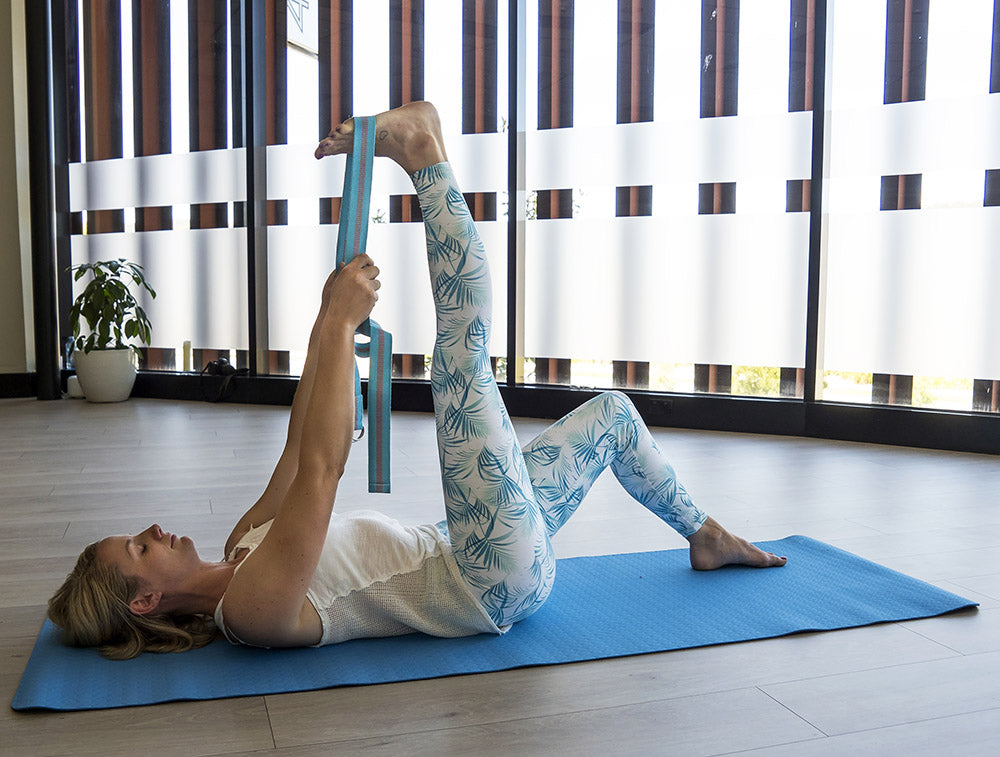
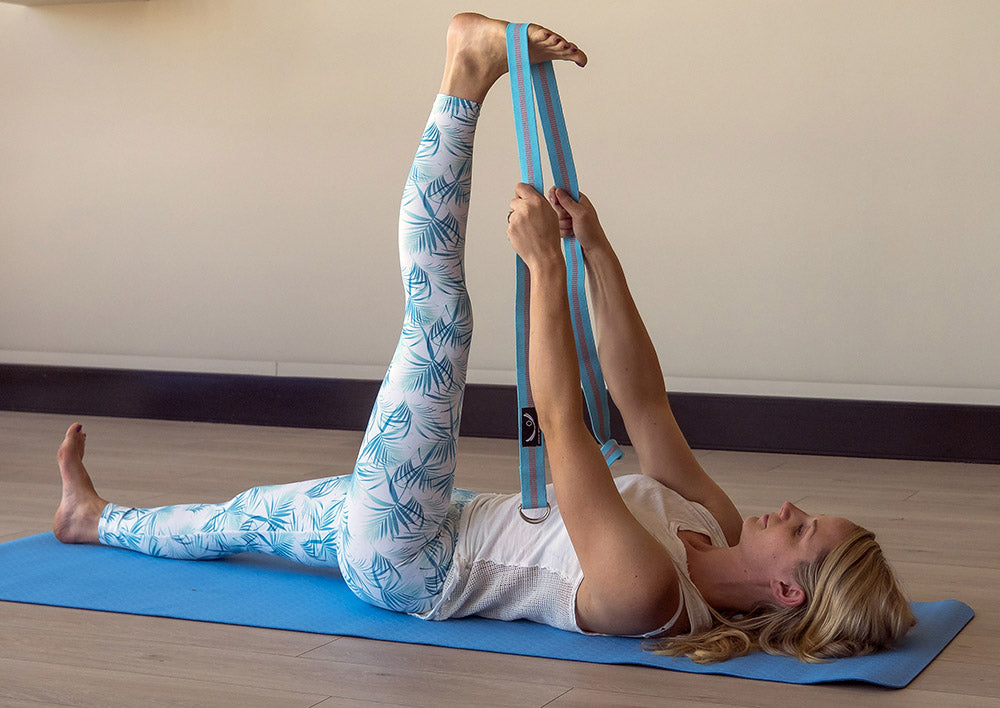
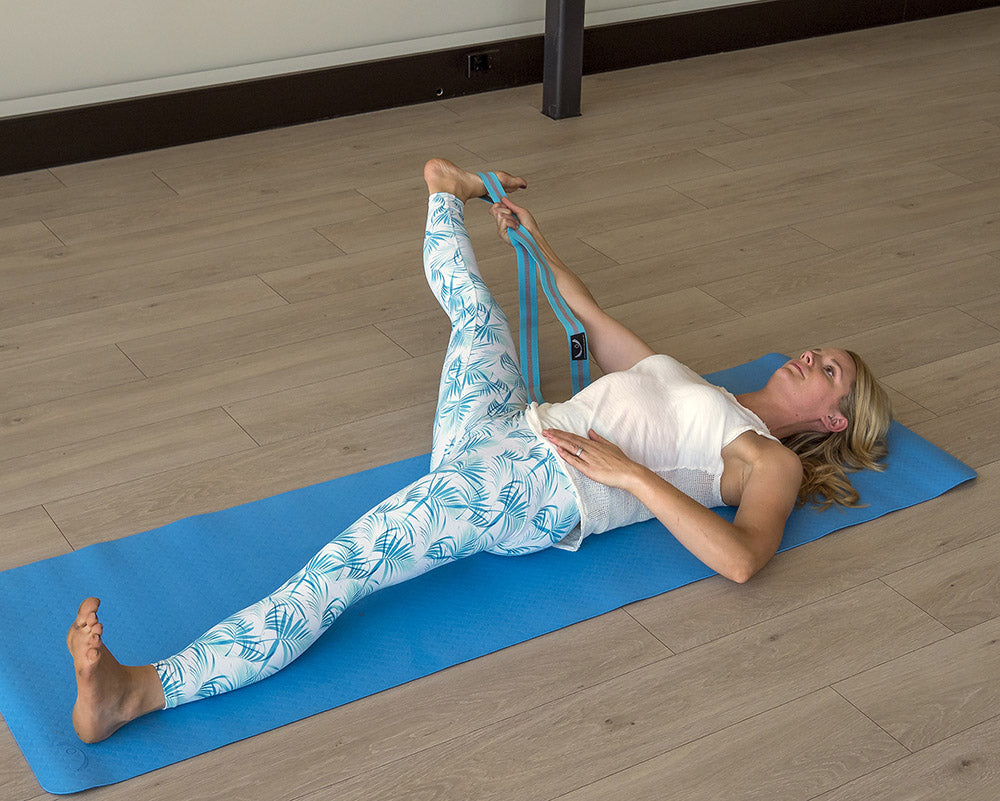
Now try the left leg.
Notes: Keep the shoulders relaxed and grounded, draw chin to chest to lengthen the back of the neck.
The ‘Letting go total support’
Often saved for the chilled-out conclusion of class, restorative yoga poses are uber-relaxing. But sometimes it’s hard to surrender if you don’t feel secure and supported!
Here, our trusty prop friend comes to the rescue. For SuptaBaddhaKonasana (Supported Bound Angle Pose) the yoga strap promises to hold us so securely that busy thoughts can subside and the body’s natural ‘rest and digest’ mode can switch ‘on’, promoting deep rest and healing.
How to strap yourself in for deep relaxation:
(Grab a bolster and blanket for this pose)
